Bavarian Sweet Mustard (Bayerischer Süßer Senf)
This post may contain affiliate links. See my disclosure policy.
A thoroughly authentic sweet German mustard recipe, this Bavarian sweet mustard is the kind served at the Munich Oktoberfest! Delicious and easy to make!
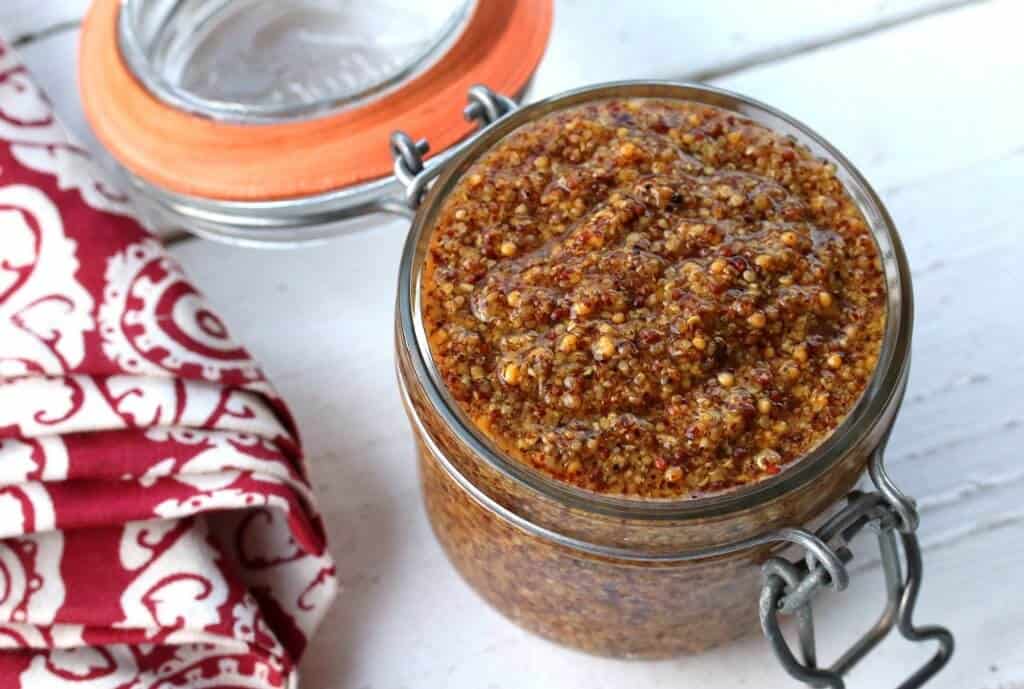
My mom is from Bavaria from a small town south of Munich on the Austrian border, and though I grew up in Baden-Württemberg in Stuttgart, I equally consider Bavaria my home. I could spend multiple posts praising the beauty of this stunning region of southern Germany, but today we’re focusing on just one aspect: Oktoberfest!
What comes to your mind when you think of the word Oktoberfest?
If you’ve been to a real Oktoberfest in Munich, Germany what undoubtedly comes to mind are the huge crowds overflowing the Bierhalle, lots of beer, amusement rides, games, and sidestalls serving a variety of traditional Oktoberfest foods like bratwursts, roasted chicken, Schweinehaxe (grilled ham hocks), Steckerlfish (grilled fish on a stick), Käsespätzle, Knödel (potato or bread dumplings), Pretzels, Obatzda (Bavarian cheese spread), Sauerkraut, Rotkohl, Reiberdatschi (potato pancakes), and Weisswurst.
Sweet Bavarian Mustard (Bayerischer Süßer Senf)
And along with these traditional dishes is a quintessential Bavarian condiment that is simply inseparable from any Oktoberfest celebration: Bayerischer Süßer Senf. The traditional, famous Bavarian sweet mustard also know as Weisswurst mustard.

There are many versions of Sweet Bavarian Mustard and I’m going to share one with you that captures the age-old flavors that have made this condiment a favorite for eons. With a hint of cloves, apples, juniper berries, allspice and nutmeg, one taste and you’ll be transported back to Munich or any Biergarten throughout Bavarian where this beloved mustard is served.
How does one eat Bavarian Sweet Mustard? Traditionally it is the classic accompaniment to Weisswurst, white Bavarian veal sausage. But it’s also commonly enjoyed with Bavarian Leberkäs, with pretzels for dipping or spread on sandwiches.
But aside from these classic uses, you can enjoy it as you would most other mild mustards. It’s very versatile.
The origin of Bavarian Sweet Mustard dates back to mid-19th century Munich where Johann Conrad Develey opened up a mustard factory on Kaufingerstraße in the center of town. He initially created French-style mustards which quickly became popular. Shortly thereafter he realized that there was a gap in the mustard market: A sweet mustard was missing.
He began experimenting with infusing vinegar with onions and a variety of spices like cloves, nutmeg and allspice to create a enticing and flavorful base to which he then added both yellow and brown mustard. He achieved the sweet flavor he was looking for by first caramelizing the sugar by dipping red hot pokers into it. This gave the mustard a depth of flavor not achieved by regular sugar. The resulting mustard was was unlike any other of its time. And since its birth, Bayerischer Süßer Senf has remained a popular staple in every Bavarian biergarten and in every Bavarian home.
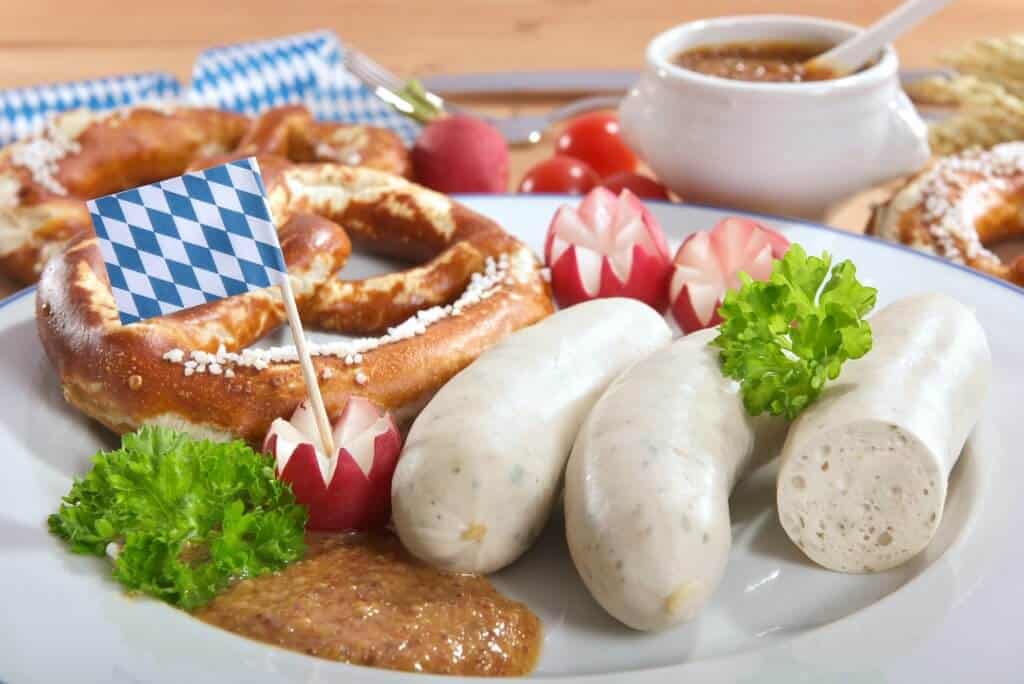
And now you can make it yourself and it’s super easy! No more having to pay a premium price for the imported stuff online or at a local German deli (if you’re lucky to have one), not only can you make it yourself for a tiny fraction of the cost, it also tastes better than any of the store-bought versions!
And it makes the perfect hostess and holiday gift. This recipe makes a fairly large batch and for just pennies more you can double it.
Sweet Bavarian Mustard Recipe
Let’s get started!
The first thing we’re going to do is prepare the spiced sweet vinegar solution.
Originally the sugar was scorched with hot irons to caramelize it and later people caramelized it in frying pans. Today most people just use regular sugar or brown sugar to try and mimic that rich caramelized flavor. I’m using Mexican piloncillo which clearly isn’t traditional and undoubtedly Herr Develey never would have heard of let alone used it, but I’m using it because piloncillo has a more pure caramelized flavor and more closely resembles caramelized sugar than does molasses added to white sugar (ie, brown sugar). Piloncillo is very unprocessed. It’s simply cane sugar juice that has been reduced to a thick syrup and then dried into shaped molds. Because it’s so unprocessed it still has a lot of raw qualities that impart a deep rum, caramel flavor.
You’ll also need bay leaves, whole cloves, allspice berries, black peppercorns, ground nutmeg and juniper berries (fyi, you also need juniper berries for making German Red Cabbage).
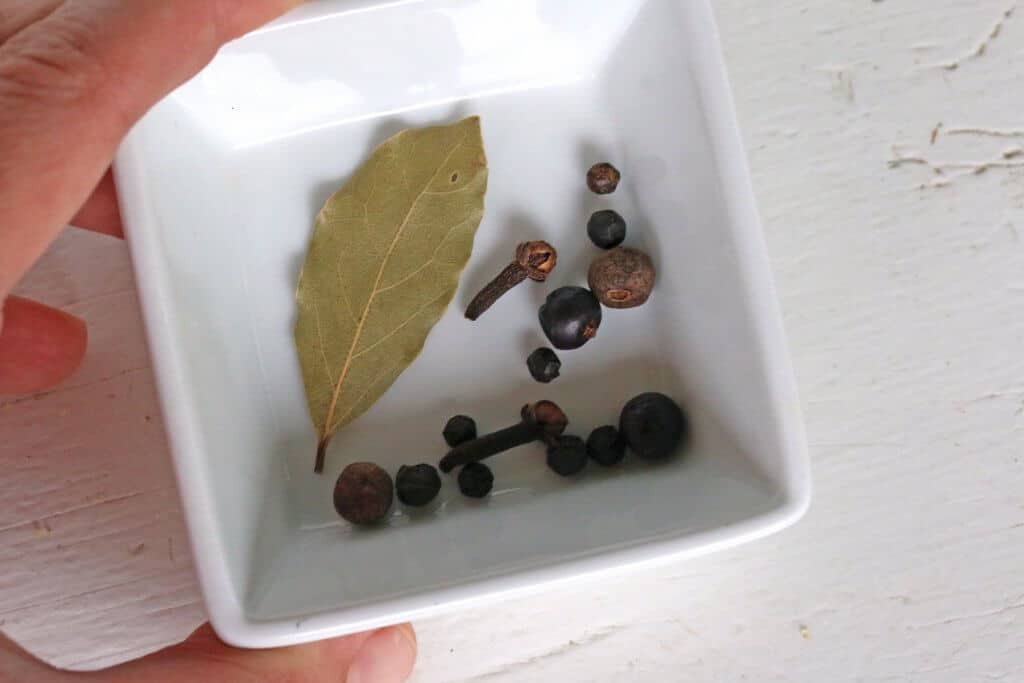
Place all of the ingredients, except for the mustard seeds, in a medium stock pot. Bring to a boil, cover and simmer for 10 minutes. Turn off the heat and let it steep for 1 hour.
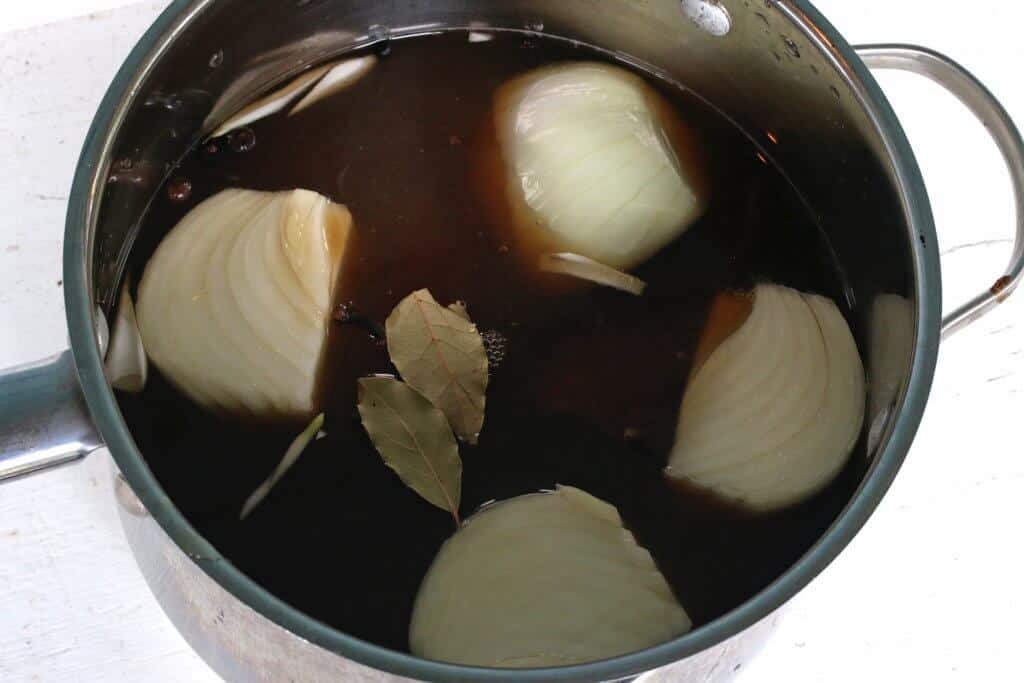
Strain the liquid and place it in a large non-reactive bowl (preferably glass).
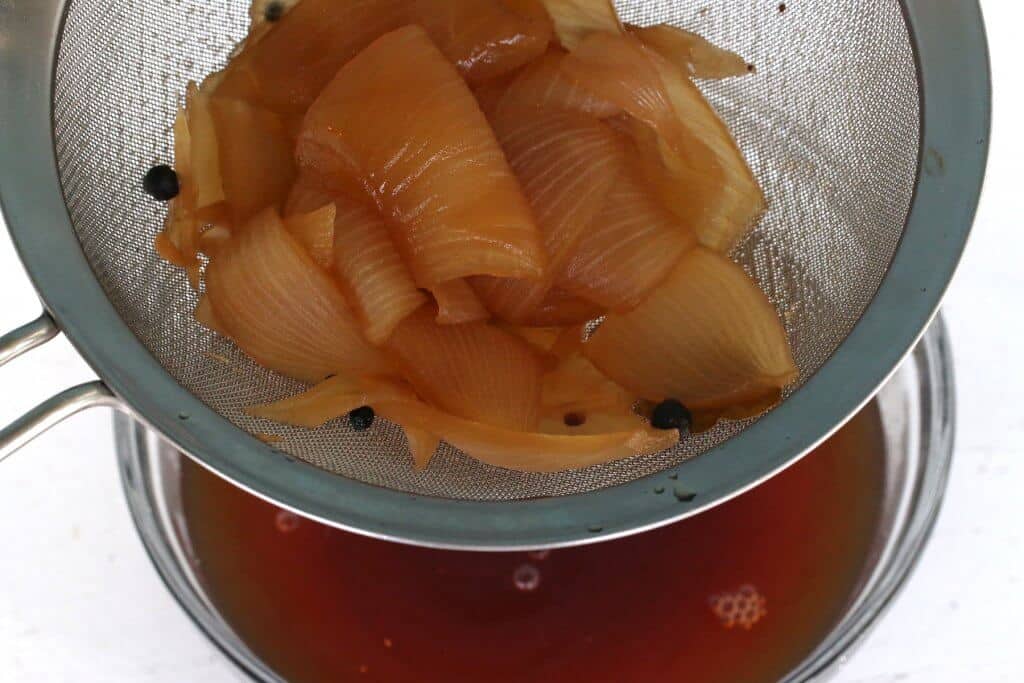
Next we’re going to grind the mustard seeds.
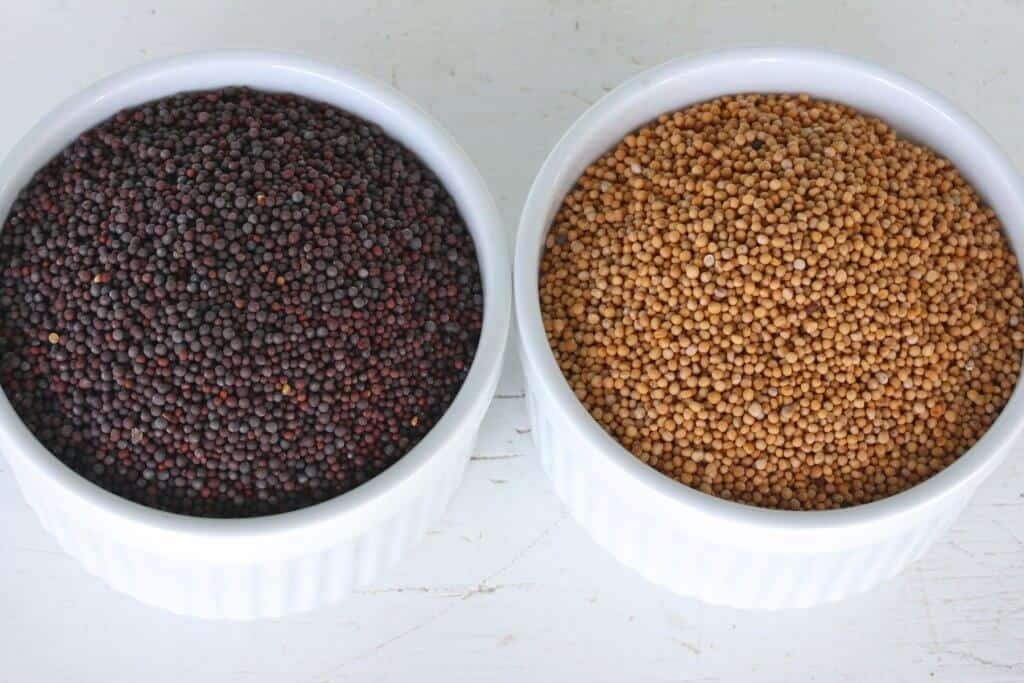
Grind them very coarsely, you don’t want a fine powder.
I’ve been using my Krupps Spice/Coffee Grinder to for 10 years to grind spices and spice blends and it’s still going strong.
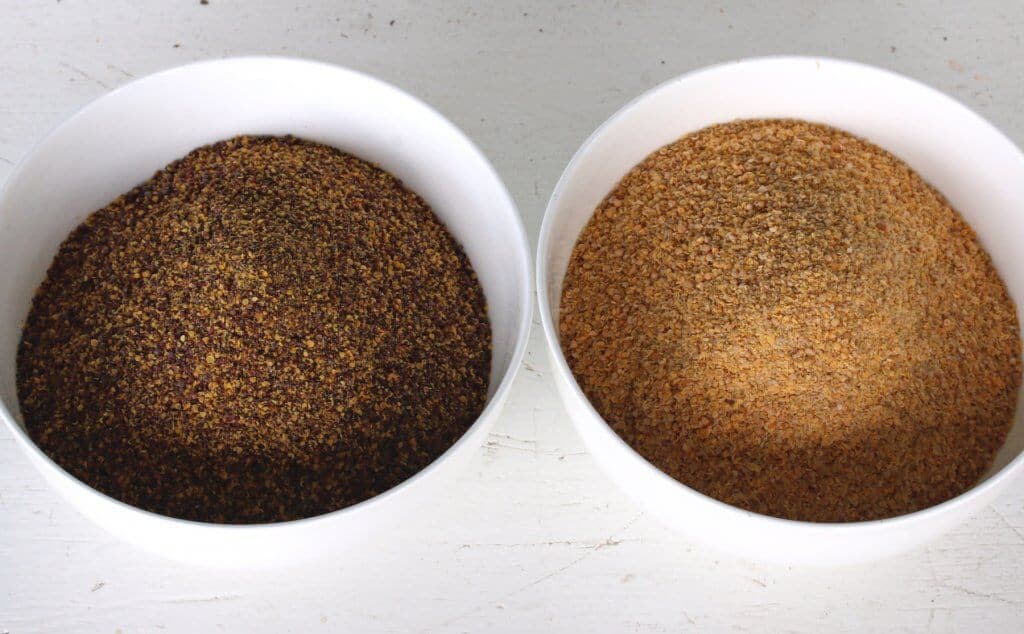
Stir the ground mustard seeds in the vinegar solution. It will thicken.
Cover and refrigerate for at least 3 weeks before using to allow the flavors to meld and deepen. The mustard will initially be quite hot but over this resting period the heat will become more subdued. Over time the seeds will also absorb the liquid and the mustard will thicken.
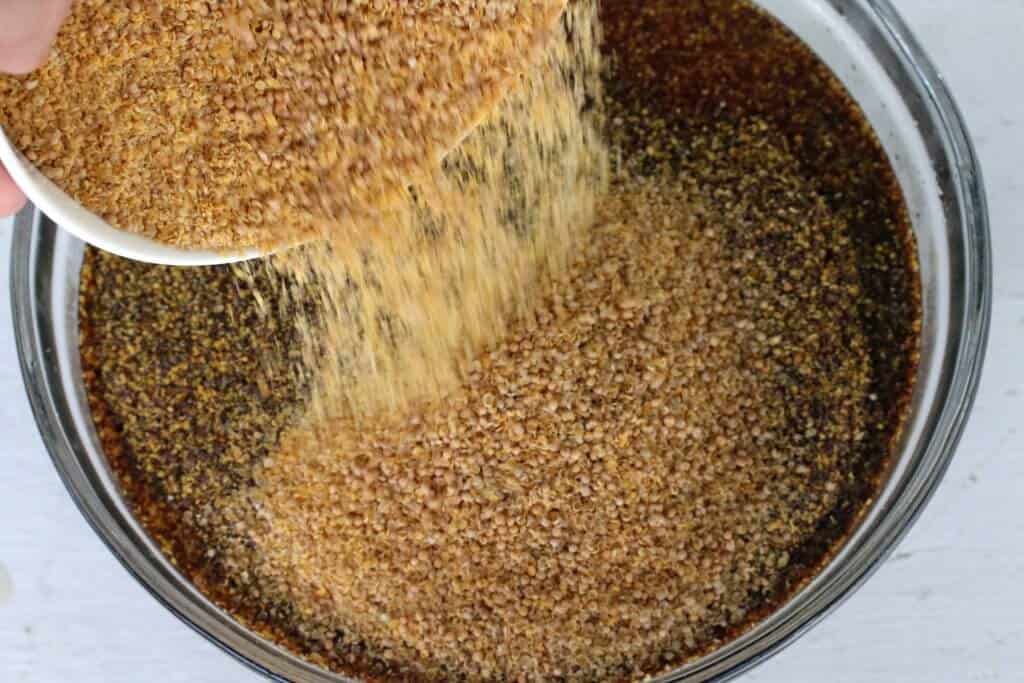
Stored in the fridge, this mustard will keep for up to 6 months.
Enjoy!

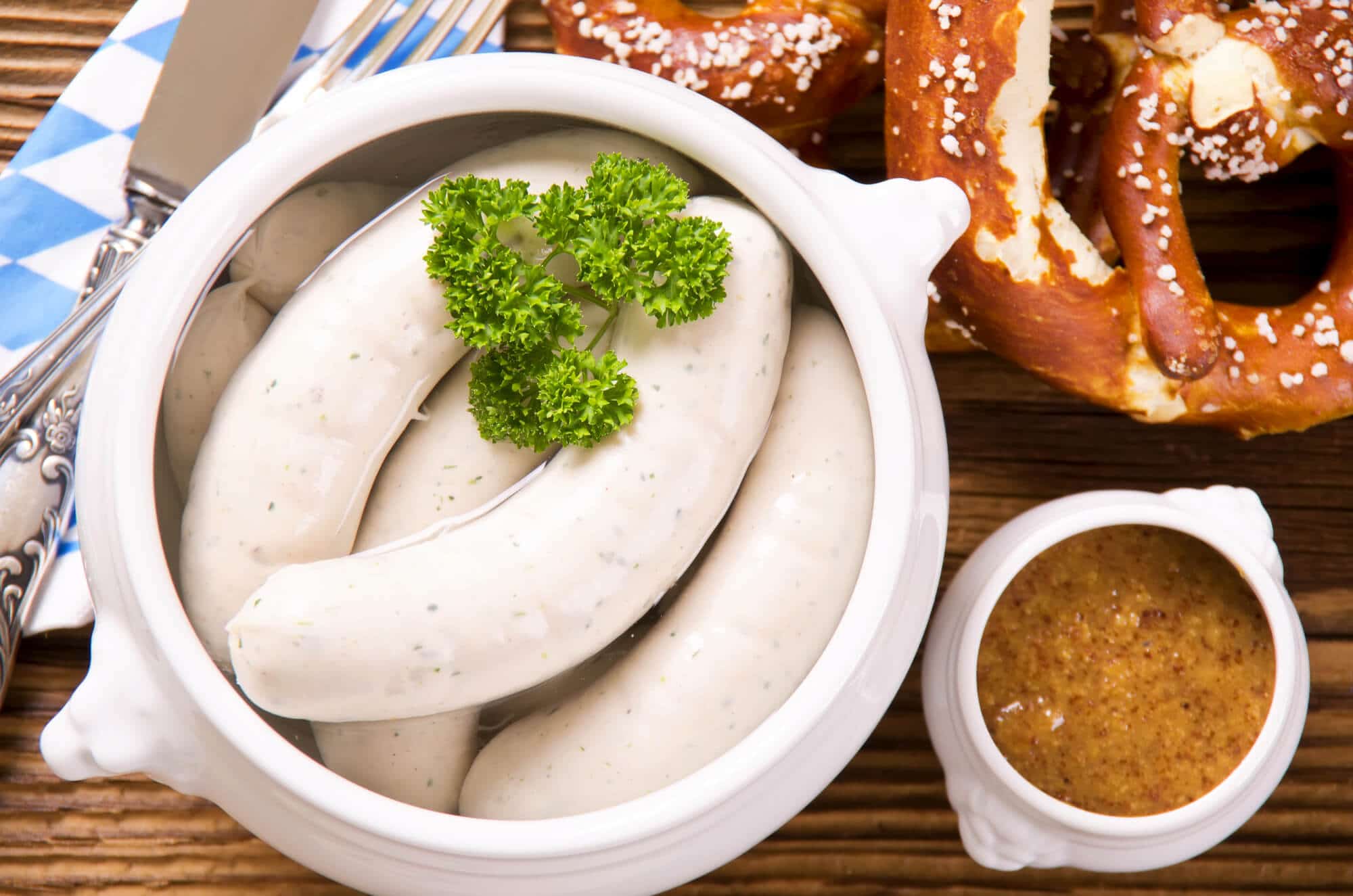
For more traditional German favorites be sure to try our:
- Obatzda
- Potato Pancakes (Kartoffelpuffer)
- Spaetzle
- Kaesespaetzle
- Schnitzel
- Jagerschnitzel
- Currywurst
- Sauerbraten
- Rouladen
- Rotkohl
- Maultaschen
- German Potato Soup
- Swabian Potato Salad
- Semmelknoedel
- Zwiebelkuchen
- German Bread (Vollkornbrot)
- Bratwurst
Save This Recipe
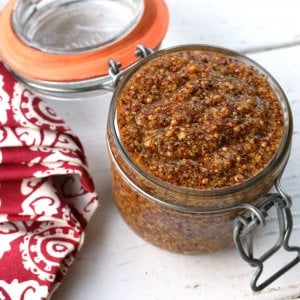
Bavarian Sweet Mustard (Bayerischer Süßer Senf)
Ingredients
- 2 1/2 cups quality white wine vinegar
- 1 1/2 cups water
- 3/4 cups apple juice
- 16 ounces Mexican piloncillo ,can substitute brown sugar - see info in blog post about why piloncillo is recommended. Use slightly less if using brown sugar (it's sweeter than piloncillo)
- 1 large yellow onion ,quartered
- 1 large clove garlic ,halved
- 4 juniper berries ,fyi, you also need these for making Rotkohl
- 4 allspice berries
- 4 whole cloves
- 8 black peppercorns
- 1/8 teaspoon ground nutmeg
- 1 large bay leaf
- 2 teaspoons kosher or sea salt
- 9 ounces yellow mustard seeds
- 9 ounces brown mustard seeds
Instructions
- Bring all ingredients, except for the mustard seeds, to boil in a medium stock pot. Simmer covered for 10 minutes. Turn off the heat and let steep for 1 hour. Strain the ingredients and place the vinegar solution in a large non-reactive bowl (preferably glass).
- Use a spice or coffee grinder to very coarsely grind the mustard seeds.
- Stir the coarsely ground mustard seeds into the vinegar solution. The mixture will initially be liquidy and will thicken over time. Cover and refrigerate for at least 3 weeks before using to allow the flavors to meld and deepen. The mustard will initially be quite hot but over this resting period the heat will become more subdued.
- Stored in the fridge, this mustard will keep up to 6 months.
- Note: This recipe can be halved or quartered if you don't want to make a large amount.


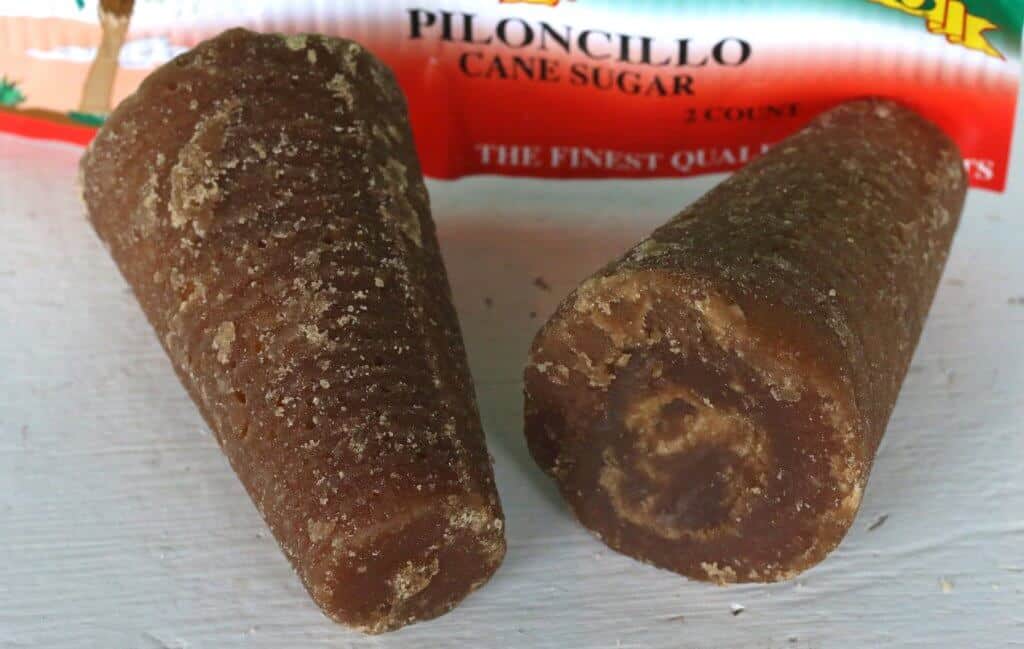


















Thanks for sharing this it looks amazing!! See when you transfer it to a glass bowl to go into the fridge does it have to be airtight? Also is panela the same piloncillo as that’s the only one I can seem to get delevered..
Thanks again :)
Thank you, Sarah! It doesn’t have to be totally airtight, but it really is best if you want to avoid cross-contamination with other flavors in the fridge. Yes, panela and piloncillo are the same – piloncillo is just the Mexican version that’s shaped into a cone. Happy mustard making! :)
I made this and gave out as Christmas gifts to my very large family. One niece who does not like mustard at all said her husband never even got to try it because she ate it all!
I have a lot of liquid at the bottom but my brother and his wife take that and use as salad dressing. Had to Give copy of recipe to neighbor they liked it so much. Thank you and so glad I tried it except now everyone expects it from me.
That’s awesome, Annette, thank you so much! Regarding any liquid collecting on the bottom, you may need to give it an occasional stir.
The print version puts the brown seeds at the top of the second. Easy to overlook. That may the reason for the excess liquid.
Makes a very fine mustard.
Thznk you for posting this recipe. I have so missed the sweet senf!!
The proceedings is a testimony of its excellence!
When I made my second batch I was enjoying it with lunch as one of my customers were in. From the smell she wanted some.
I brought a 6oz jar the next day for her. But before she came, another customer, my friend Elke, originally from Stuttgart was in and noticed it.
Well, I sent my original customer to my house to retrieve another jar. And, my friend Elke called to inform me she ate the whole box of pretzels and now needed more of both!!
Fantastic, Colleen!! That’s a compliment indeed, I’m so glad you and your friends are enjoying this mustard – thank you!
Yes, Vicki, it can! Just Google canning mustard. The best sites are Bells Canning, Honest-food.net and maybe Mason?! Alton Brown has a good recipe for basic mustard too. Just remember to use real canning jars and lids! Get the really tiny ones!
Hah! Nearly a year exactly! This was so well received last year, I am making another batch for gifts this season too! My European friends love this! ( I also make various liquor flavored mustards, using those tiny bottles from the liquor store! The moonshine, and the southern comfort, rum and bourbon are also great!)! Happy Christmas all!
That is so awesome, Joan!! Seriously, those are the best gifts – your friends are lucky! :)
This sounds so close to a recipe I had from my Great Tunte, which unfortunately over 3 moves I lost. Hers was BWB for 15 minutes to preserve. Can this recipe also be preserved instead of refrigerated?
Thank you Vicki
Could one use Sucanat (unrefined raw sugar), which I already have, instead of piloncillo?
Sure, Flori!
I completely forgot to mention what I did about the Mexican sugar. Since I didn’t have any, your comments about the old timers using hot irons to ” sear” the sugar, I did this. I have some very course Demerara washed raw sugar in my cast iron pan. I heated it over very low for about 4-5 minutes, shaking it often to keep it from burning. I believe that may have slightly carmelized it for the vinegar! The vinegar came out perfectly and I even made a second batch from the seeds, etc. Terrific! Thanks and I hope this helps someone who, like me, would never have that Mexican stuff on hand! All the best! Happy cooking!
Nice! Thanks for sharing, Joan.